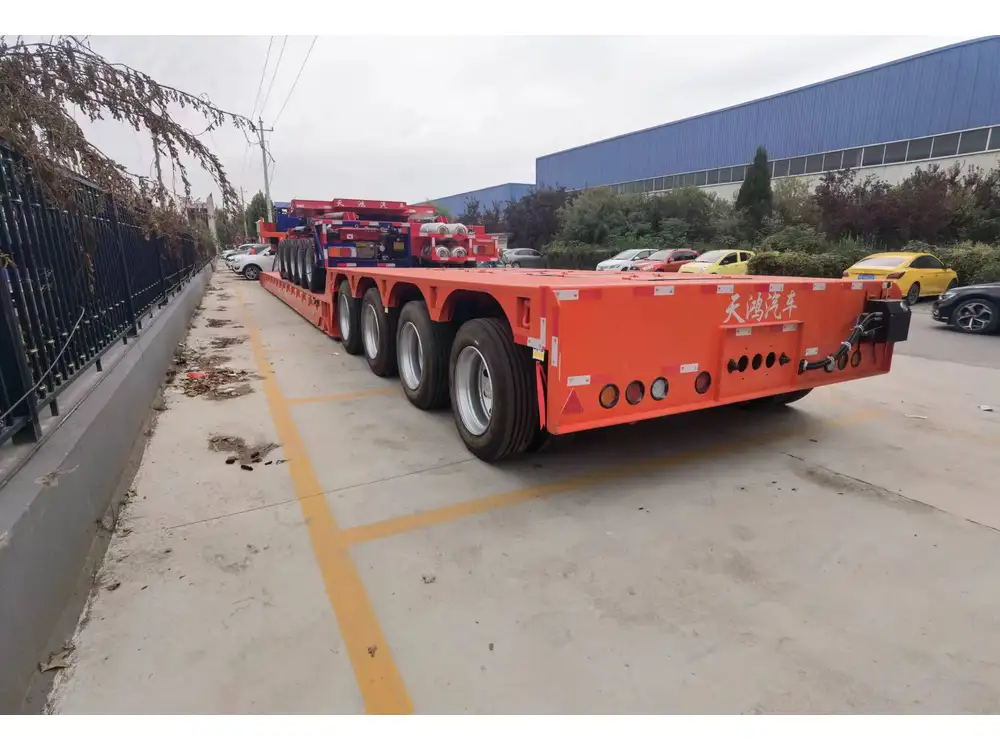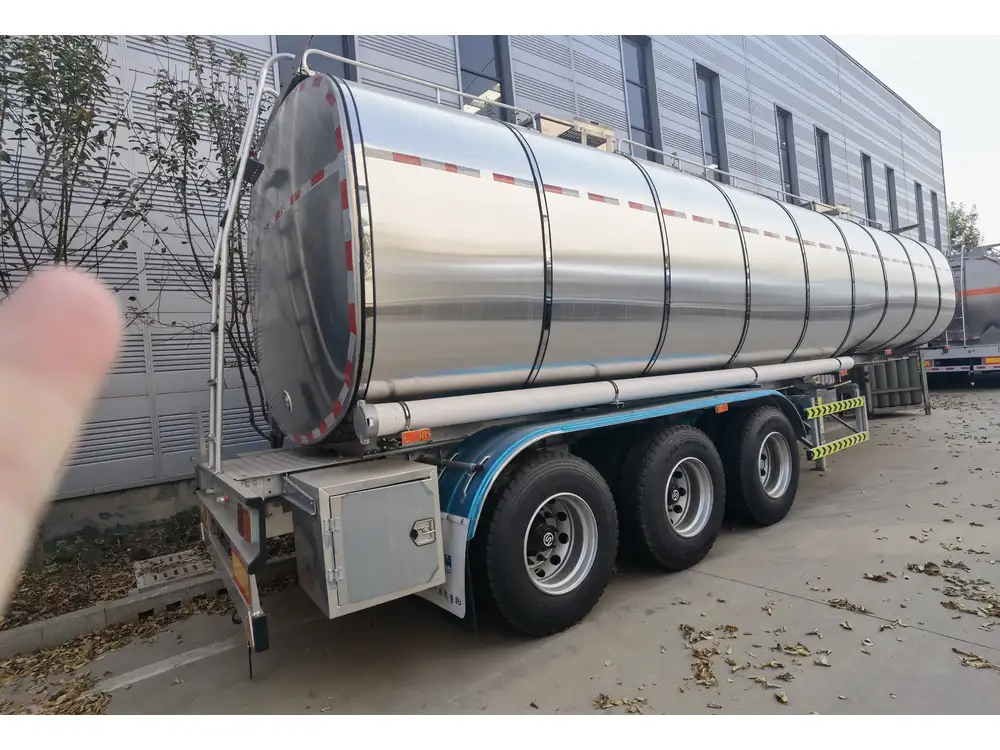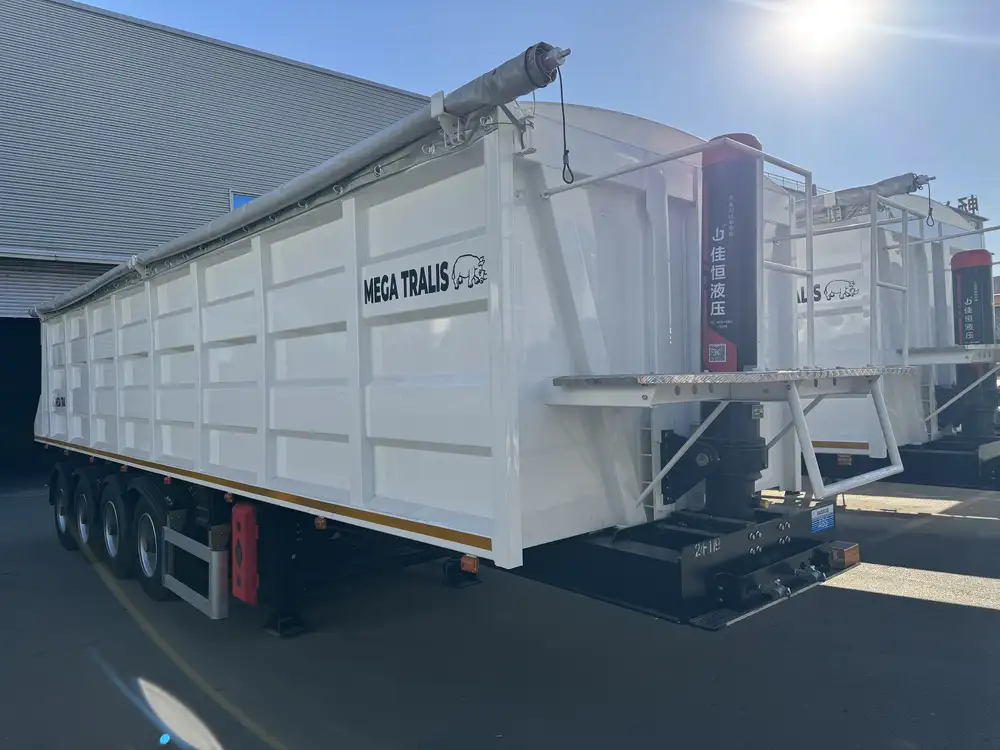Backing a semi-trailer can be a daunting task even for seasoned drivers. The sheer size and length of the trailer, combined with its maneuverability challenges, often lead to anxiety and errors. However, with our detailed strategies and step-by-step instructions, we can transform this complex process into a manageable and efficient operation. Here, we will break down effective techniques, essential pointers, and the underlying mechanics that dictate successful backing maneuvers.
Understanding the Basics of Trailer Dynamics
Backing a semi-trailer hinges on understanding the principles of maneuvering longer vehicles. The fundamental characteristics of trailer dynamics include:
| Feature | Description |
|---|---|
| Pivot Point | The point of articulation where the trailer connects to the tractor. Understanding this point aids in anticipating trailer movements. |
| Swing Radius | The area in which the trailer swings during turns. A larger swing radius increases the likelihood of obstacles colliding with the trailer. |
| Turning Angle | The angle at which the front wheels of the tractor turn will dictate how effectively the trailer follows. |
| Blind Spots | The areas around the trailer that are not visible to the driver. Awareness of these blind spots is crucial for safe maneuvering. |
Common Challenges Drivers Face
Even experienced drivers may struggle with various challenges when backing a semi-trailer. Recognizing these problems can help mitigate risks:
- Limited Visibility: The rear of the trailer is often out of sight, complicating precise backing.
- Space Constraints: Tight parking lots, narrow roads, or loading docks require exceptional precision and control.
- Slope and Incline: Uneven ground can dramatically affect maneuverability, making it essential to account for incline impact on trailer movement.

Step-by-Step Guide on How to Back a Semi-Trailer
1. Prepare Your Route
Before engaging in any backing maneuver, taking the time to assess the environment and plan your path is crucial. Here’s how to prepare effectively:
- Inspect the Surroundings: Look for obstacles such as lamp posts, pedestrians, and other vehicles. Utilize mirrors and, if necessary, physically step out of the vehicle for a clearer view.
- Communicate with Ground Personnel: Utilize spotters when available. Their perspective can provide vital information about blind spots and assist in navigating tight spaces.
2. Positioning the Tractor
Positioning the tractor correctly can significantly simplify the backing process:
- Approach the Docking Area: Drive alongside the docking area and bring the trailer parallel to where it needs to go.
- Determine the Angle: Position the tractor at an angle of approximately 45 degrees to the trailer, allowing for greater control as you begin the backing process.

3. The Backing Process
Once you’ve prepared and positioned yourself, it’s time to back the semi-trailer. Follow these steps:
- Engage Your Turn Signals: Communicating your intentions to others on the road improves safety.
- Check Mirrors Frequently: Constantly monitor your mirrors as you back up to ensure the trailer is tracking correctly.
- Steer in the Opposite Direction: Remember, to turn the trailer left, you need to steer the tractor right and vice versa. This counter-intuitive action is critical for effective maneuvering.
Table of Steering Guidelines
| Desired Trailer Direction | Steering Direction |
|---|---|
| Left | Right |
| Right | Left |
| Straight | Keep Steering Neutral |
4. Making Corrections
Inevitably, adjustments will be necessary during the backing process. Here’s how to make them effectively:
- Small Corrections: Utilize slight steering adjustments to realign your trailer without overcorrecting.
- Throttle Control: Always maintain a slow and steady speed, allowing for quick reactions to unexpected movements.

5. Completing the Maneuver
Once the trailer is aligned with the docking area or intended parking space, it’s important to finish the process with caution:
- Straighten the Trailer: Once the trailer is in position, gradually straighten the tractor to align both vehicle parts.
- Secure the Vehicle: Once parked, apply the parking brake before leaving the vehicle and ensure it’s properly secured with chocks if on an incline.
Additional Techniques for Successful Backing
While the above steps provide a solid foundation, additional techniques can enhance your backing proficiency:
Utilizing Technology
Modern technology can offer significant advantages. Consider the following options:
- Rear-View Cameras: These provide expanded visibility and eliminate blind spots. They can be invaluable when reversing in tight spaces.
- Smart Sensors: Proximity sensors alert drivers of nearby obstacles, aiding in making informed adjustments during the backing process.

Practicing with Skill
The old adage “practice makes perfect” holds true here:
- Practice in Open Spaces: If you’re a novice, practice backing techniques in a safe, open environment until you feel comfortable and proficient.
- Simulators: Truck driving simulators can provide a risk-free training environment, allowing for experimentation with various backing scenarios.
Safety Protocols to Follow
Backing a semi-trailer is not just about technique; safety is paramount. Ensure that you:
- Wear Seat Belts: Always buckle up before starting the backing process; safety first!
- Avoid Distractions: Maintain focus solely on the maneuver. Avoid engaging with passengers or using mobile devices.
Troubleshooting Common Backing Mistakes
Despite preparation and practice, errors can occur. Here’s how to troubleshoot some common backing mistakes:
- Jackknifing: If the trailer begins to bend at an acute angle relative to the tractor, steer quickly in the opposite direction to straighten out the angle.
- Cutting Corners: If the trailer is not aligned properly with the intended path, you’ll need to pull forward and re-position.

Frequently Asked Questions (FAQs)
Q1: How can I improve my spatial awareness when backing a semi-trailer?
A: Start by enhancing your mirror checks. Regularly glance over your shoulders while maintaining an awareness of your surroundings, including the position of your trailer in relation to nearby objects.
Q2: How do I handle slippery conditions when backing?
A: In wet or icy conditions, reduce your speed and give yourself extra time to navigate. Make small corrections and use gradual steering adjustments to maintain control.

Q3: Is it better to use a spotter when backing?
A: Yes, if available. A spotter can provide additional perspective and facilitate communication, which is invaluable for safety.
Q4: How much practice do I need to get comfortable with backing a semi-trailer?
A: The amount of practice varies for each individual. Consistent practice in different environments will help build confidence and skill over time.
Conclusion
Backing a semi-trailer is undeniably challenging, but with the right techniques, preparation, and a commitment to safety, any driver can master this vital skill. By understanding the dynamics of your vehicle, practicing effectively, and utilizing available technology, you can navigate tight spaces like a seasoned professional. Whether you’re a beginner or an experienced driver looking to refine your skills, embracing these strategies will enhance your effectiveness and confidence on the road.
In the realm of semi-trailer backing, knowledge is power, and preparation is key. Equip yourself with these essential techniques, and you’ll transform the act of backing a semi-trailer from a daunting challenge into a routine task. Remember, every successful maneuver enhances your skills, paving the way for a safe and proficient driving career.



